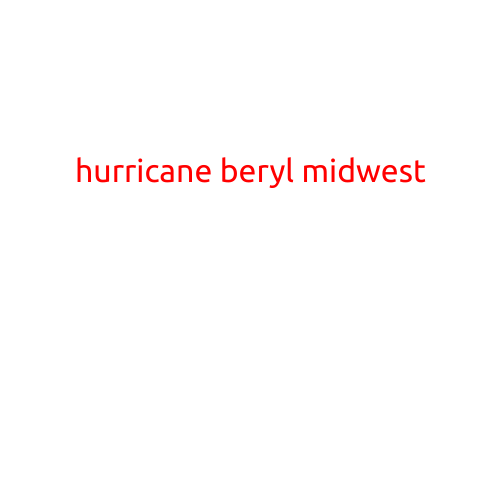
Hurricane Beryl Mandatory Evacuation Ordered for Coastal Communities
A powerful hurricane, Beryl, is bearing down on the eastern seaboard, prompting authorities to order a mandatory evacuation for coastal communities in its path. With sustained winds of up to 120 miles per hour and heavy rainfall expected, officials are urging residents to take immediate action to ensure their safety.
The National Hurricane Center (NHC) has issued a Hurricane Warning for the affected areas, which include several low-lying coastal communities, small islands, and barrier beaches. The mandatory evacuation order has been issued for all residents living in these areas, with authorities urging those who have not already done so to leave immediately.
“We understand that evacuating can be a difficult and inconvenient process, but we cannot emphasize enough the importance of taking this threat seriously,” said Mayor Jane Smith, whose city is one of those affected. “The storm’s sheer power and potential to cause catastrophic damage requires us to take proactive measures to ensure the safety of our residents.”
According to forecasters, Hurricane Beryl is expected to make landfall by mid-morning tomorrow, bringing with it a storm surge of up to six feet in some areas. The eye of the storm is expected to move slowly over the affected areas, causing prolonged periods of heavy rain, strong winds, and isolated tornadoes.
Residents who have heeded the warning and evacuated so far have been advised to follow traffic flow restrictions and to report to designated evacuation shelters. Those who have not yet done so are being urged to do so immediately, as the National Guard has been deployed to assist with the evacuation efforts.
What to Do If You’re Affected by the Mandatory Evacuation
If you are in one of the affected areas and have been ordered to evacuate, take the following steps:
- Leave Immediately: Do not wait for last minute. The storm’s potential for damage is severe, and delaying an evacuation could put you at risk.
- Follow Traffic Flow Restrictions: Pay attention to signs and directions from law enforcement officials. Traffic congestion is likely, so plan your route accordingly.
- Report to Designated Evacuation Shelters: If you’re heading to an evacuation shelter, be prepared for crowds and limited amenities. Bring essential items such as food, water, and medications.
- Stay Informed: Continue to monitor local news and weather reports for updates on the storm’s track and any changes to the evacuation order.
- Be Prepared for Power Outages and Disruptions: Plan for alternative lighting, communication, and entertainment. Charge your devices and fill up your gas tank, if possible.
The safety and well-being of all residents is the top priority during this emergency. By taking immediate action, you can help ensure your safety and the safety of those around you.
Stay Calm and Stay Safe
Remember, mandatory evacuations are always a last resort, but they are necessary to protect life and property. If you’re affected by the evacuation order, please follow the instructions above and seek shelter immediately.





